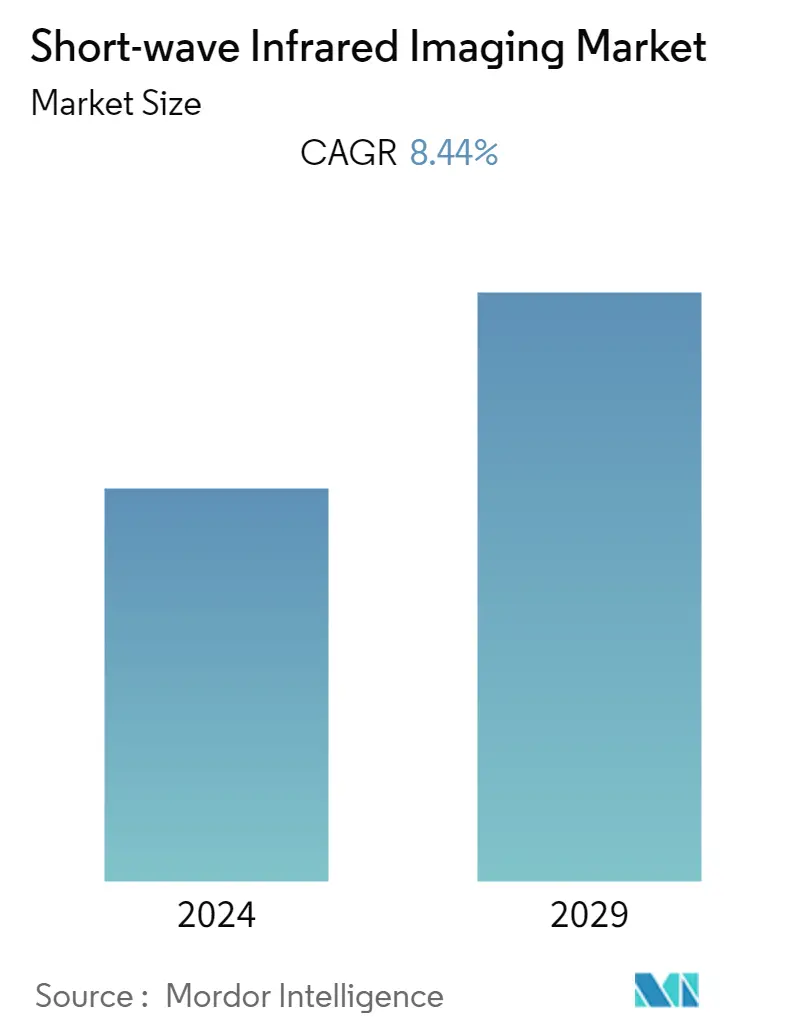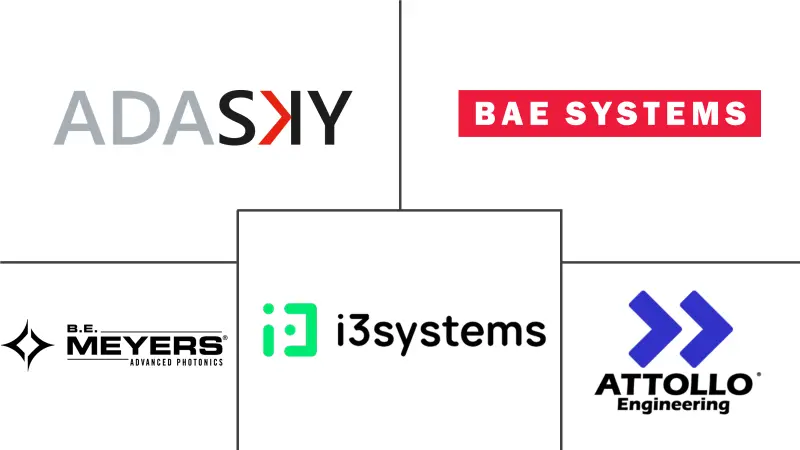Market Size of Short-wave Infrared Imaging Industry

| Study Period | 2019 - 2029 |
| Base Year For Estimation | 2023 |
| CAGR | 8.44 % |
| Fastest Growing Market | Asia-Pacific |
| Largest Market | North America |
| Market Concentration | Low |
Major Players
*Disclaimer: Major Players sorted in no particular order |
Need a report that reflects how COVID-19 has impacted this market and its growth?
Short-wave Infrared Imaging Market Analysis
The Short-wave Infrared Imaging Market is expected to grow at a CAGR of 8.44% during the forecast period, 2022-2027. With the recent outbreak of COVID-19, there has been a global disruption in the supply chain. The COVID-19 outbreak has disrupted the global tech sector, especially hardware, electronic manufacturing services providers, and semiconductor companies, as operations in the global largest tech manufacturing hub are threatened.
- Short-wave infrared imaging (SWIR) is an advanced technique for producing images based on radiation in the region of the electromagnetic spectrum, which is invisible to the naked eye. Short-wave infrared (SWIR) imaging is distinct because the radiation of interest is nearer to the visible spectrum but will still permit temperature sensing, usually over 100 °C.
- Short-wave infrared (SWIR) imaging consists of a wavelength band from 0.7 - 2.5μm. SWIR imaging is used in various applications, including solar cell inspection, electronic board inspection, identification and sorting, surveillance, anti-counterfeiting, process quality control, etc.
- Vehicle navigation is increasingly relying on SWIR cameras. With the rise of self-driving cars, SWIR technology can assist in navigating through fog, snow, dust, and rain. Recently, Israeli start-up TriEye introduced a dashboard-mounted SWIR camera for the consumer car market that can successfully navigate through snow, fog, dust, and rain, responding to the expanding use of SWIR cameras in autonomous vehicles.
- A lot of investments are going on around the globe to develop short-wave infrared imaging technology. For instance, in January 2022, Emberion, a developer of high-performance short-wave infrared imaging using nanomaterials, raised EUR 6 million to accelerate infrared imaging business growth.
- Recently, Israeli start-up TriEye introduced a dashboard-mounted SWIR camera for the consumer car market that can successfully navigate through snow, fog, dust, and rain, responding to the expanding use of SWIR cameras in autonomous vehicles. According to a NASDAQ, driverless automobiles will likely dominate the market by 2030. Thus, these investments are also likely to create a scope for the market studied in this sector.
- Due to ongoing testing, research, and collaborations between companies to develop autonomous cars, the number of autonomous vehicles is anticipated to grow robustly in the upcoming years. For instance, French autonomous vehicle maker, Navya introduced an all-electric and fully autonomous Autonom Cab, the first 100% autonomous robot taxi. Another company, Valeo, partnered with Docomo to jointly develop connected cars.
